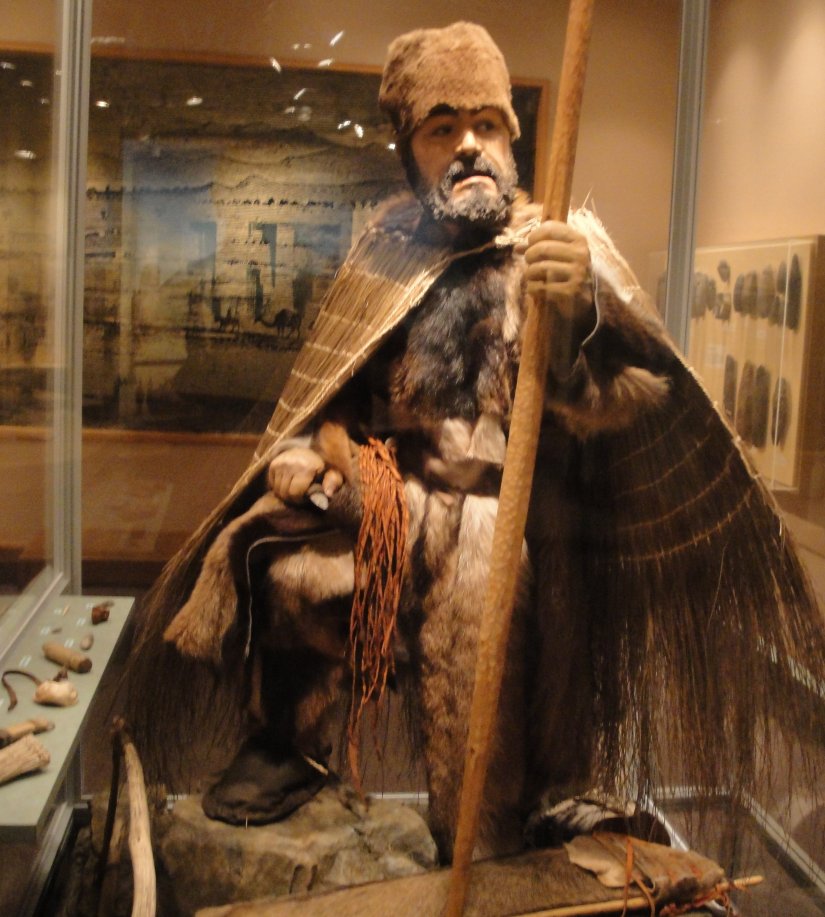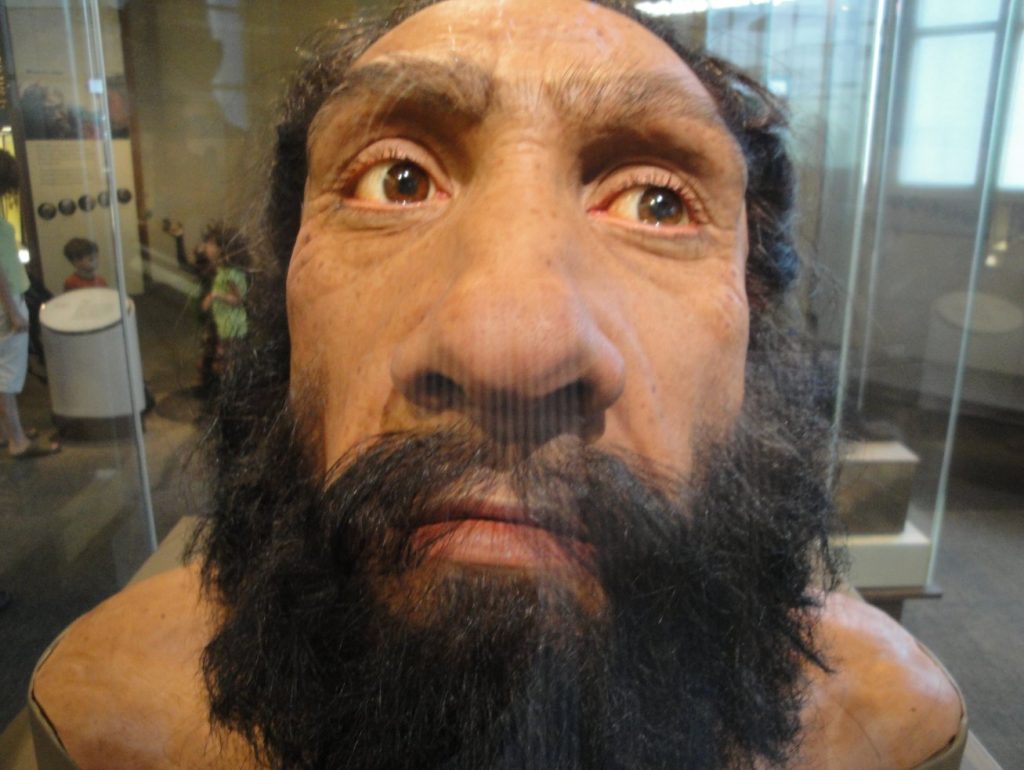
Alex and I visited the “human origins” exhibit at Smithsonian. I have trouble keeping up with the changes. As I recently wrote, I had to change my opinion of the Neanderthal man now that I found out he is a closer cousin and probable ancestor. You would think that all these prehistoric things would be more or less consistent, but they are not. Scientific perceptions change.
Anyway, the exhibit is very good. Most of the artifacts are copies, but I wouldn’t be able to tell the real ones anyway. The picture on the side is the “ice man” discovered frozen in the Alps. He may have been the victim of a murder more than 5000 years ago. Anyway, the exhibit is mostly set up to educate kids, but old people like me can enjoy it too.
The thing that made the biggest impression on me were the wax museum recreations of pre-humans. If the Neanderthal man walked down the street today, you might notice that he was unusually husky and unattractive, but if we was properly groomed you might not give him too much of a second look. Of course one reason not to stare would be to avoid eye contact with a dangerous looking weirdo. But my point is that I think you would consider him human. We do share genes with this guy, as we have recently discovered. Not so the others like the Homo-erectus. It was interesting looking into their eyes, or at least the eyes that current science has provided them.

Another surprising part of the exhibit was a skull from Lapa Vermelha, Minas Gerais in Brazil. (I will put that on my list of places to visit.) This fossil has been carbon dated to 11,500 years ago. The interesting thing is that the ancestors of today’s Native Americans were not supposed to be there yet. There is a lot of political argument over very old human fossils in the Americas.
Native American tribes often have creation myths that say they have always been in or near their current locations. Science and anthropology indicate that their ancestors wandered over from Asia via a land mass at what are now the Bearing Straits. The discovery of ancient skulls that do not resemble the current Native American populations upsets some people. They can go to considerable lengths to prevent the evidence from being uncovered that contracts the myths or threatens their positions as “the first Americans”, as with the Kennewick man, who looked more like Jean Luke Picard than Sitting Bull and was evidently most closely related to the Ainu people from Japan.
History is never really simple and when it gets tied in with current political sensitivities it is really hard to get things right. It is really hard to believe that things that happened more than 10,000 years ago still make a big difference to today’s politics, but they do.
It is a little silly. When you go far enough back, none of the current ethnic distinctions make any sense and all human history is the common heritage of mankind. The more we learn from archeology and genetics, the clearer that becomes.
